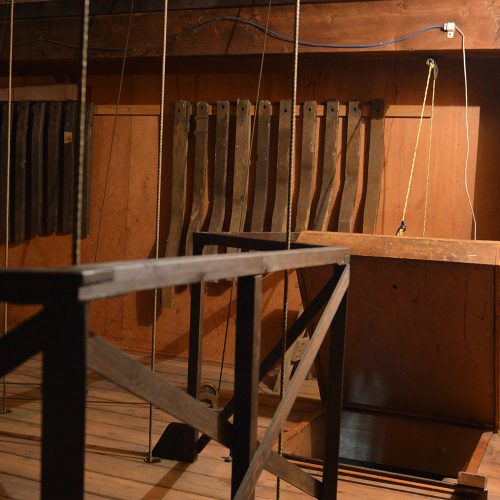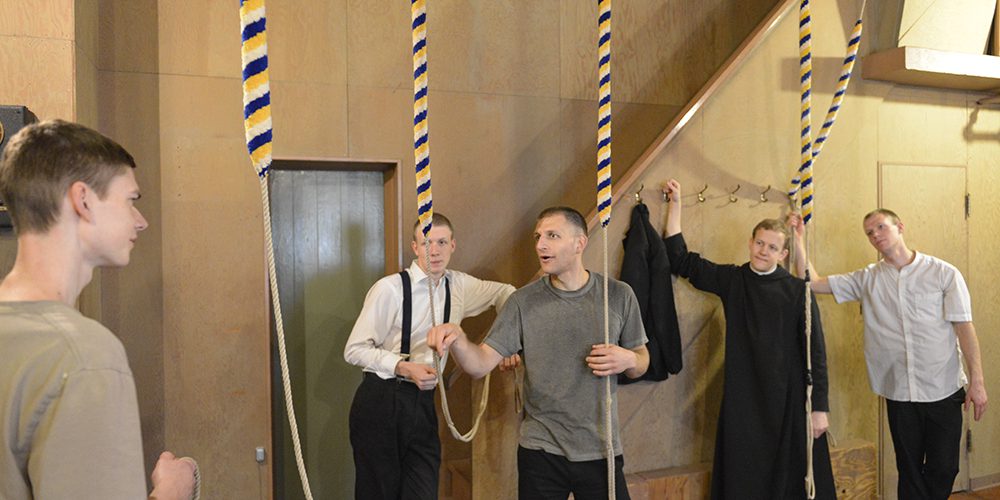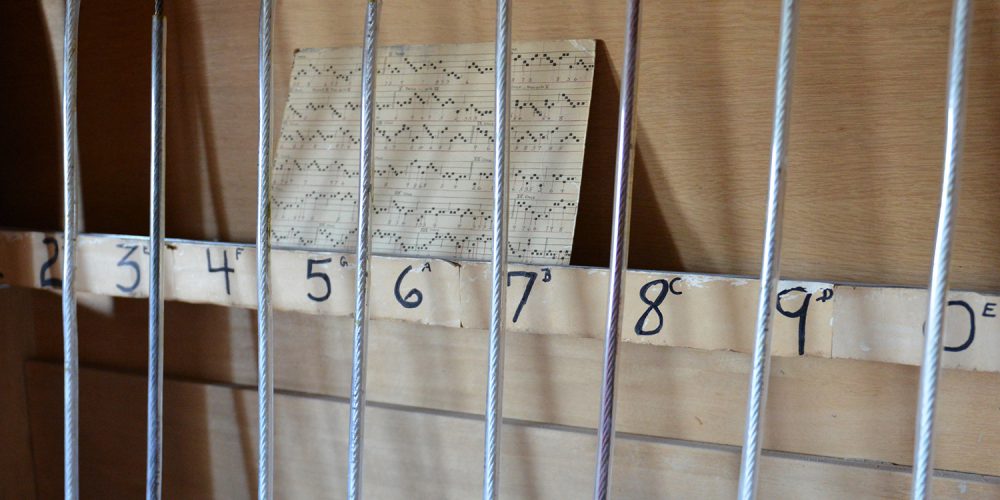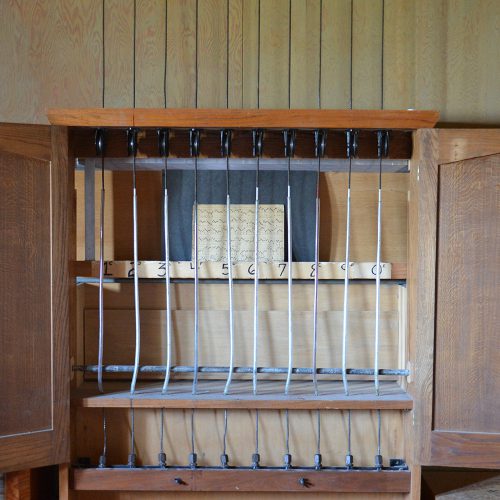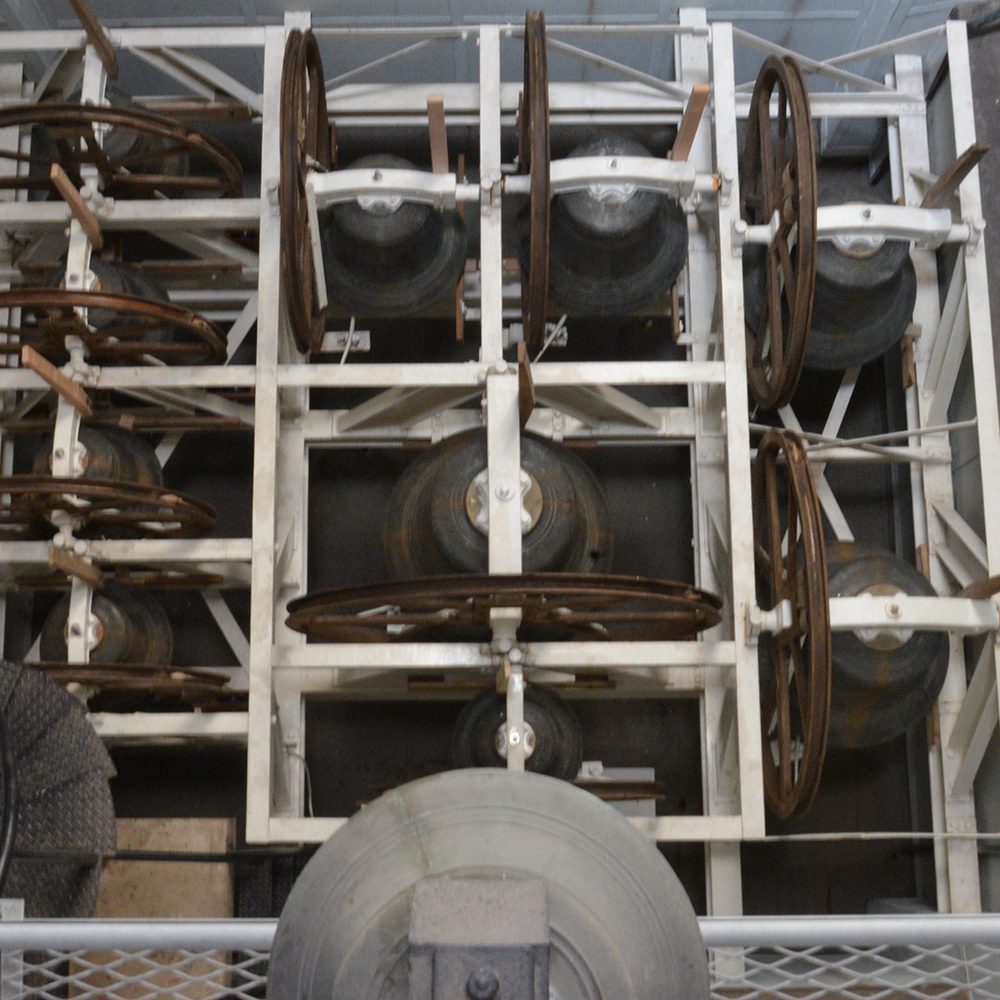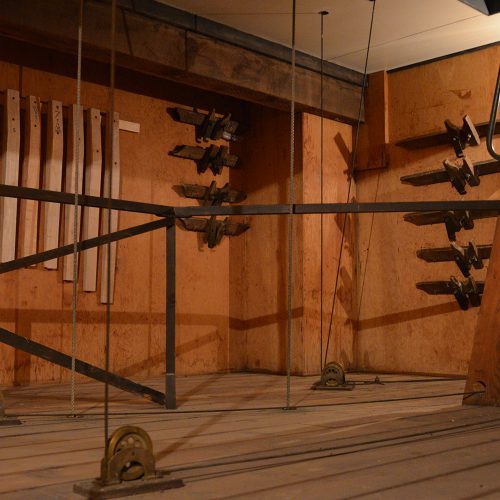Bells
English Change Ringing
The abbey’s ten bells were ordered in 1948 from the Whitechapel foundry in London, England, and were delivered to the monastery at Deer Lake in 1951. Until they could be placed in their permanent tower in Mission, the abbey bells were simply chimed” or struck with external hammers. The bells were dedicated in the fall of 1956 and lowered in the bell tower after its completion the next summer.
The Pfitzer Memorial Tower was designed by Mr Asbjorn Gathe, the architect for all the abbey and seminary buildings. As he pointed out, the bell tower is actually a very large musical instrument. The abbey’s was the first bell tower to be built entirely of reinforced concrete. The heaviest bell weighs 1300 kilograms, the lightest 273 kilograms. The bells were carefully tuned to be in the key of E major. Tuning is achieved at the foundry by shaving off some of the bronze from the inside of the bell.
Like their mediaeval counterparts, the abbey bells ring out for the divine worship. But unlike their forerunners of the Middle Ages and unlike most contemporary Continental bells, the abbey bells are rung in “change ringing”, i.e. pealing of the bells in ever- changing sequences. This method was developed and perfected in post- Reformation England. There are over six thousand bell towers for change ringing in England today; there are only six such towers in Canada.
A change-ringing bell is connected to a wheel and a rope, by means of which it is swung through a full circle each time it rings. One person is needed to ring each bell, and that person must carefully listen to his bell and watch the ropes of the other ringers if his bell is to avoid clashing, sounding at the same time as other bells.
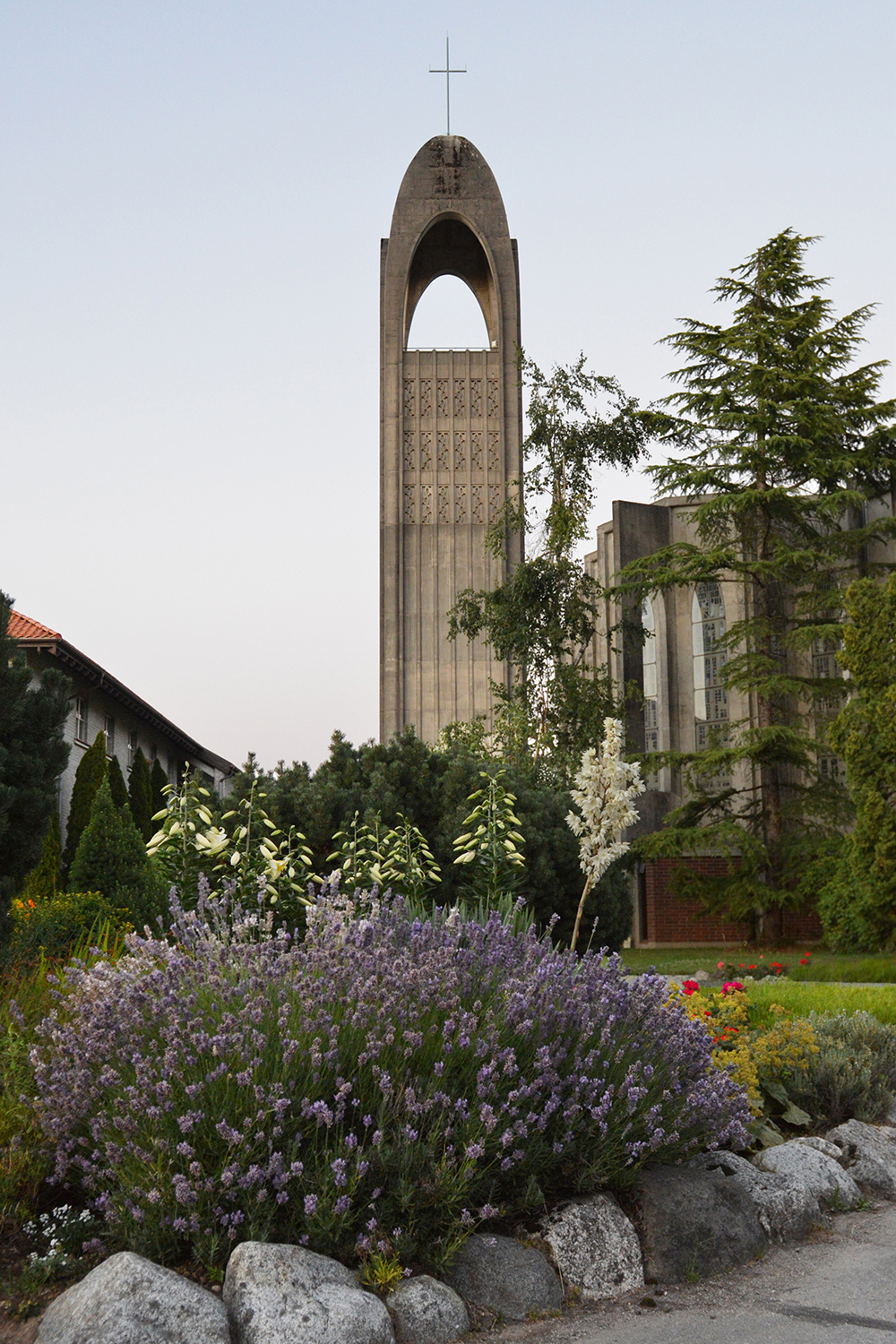
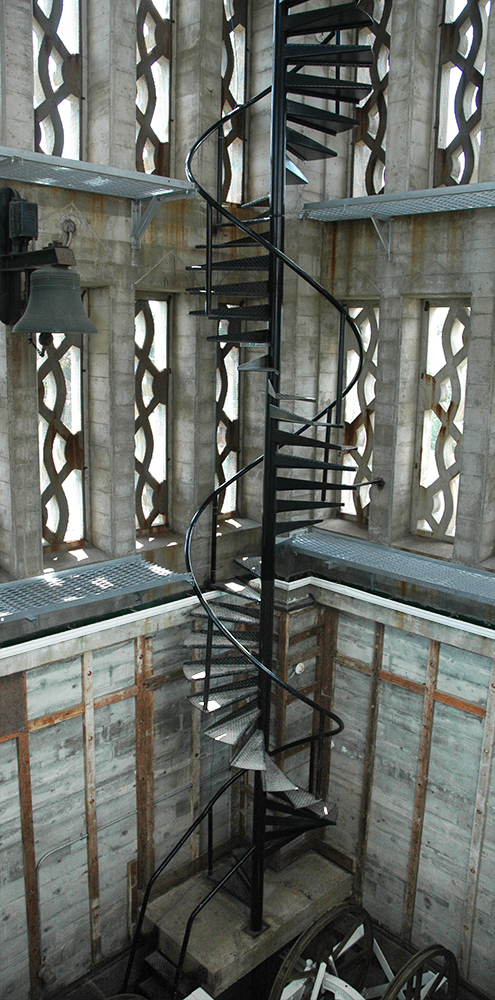
Name |
Weight |
Note |
Ave Maria |
485 lb |
G |
St. Patrick |
524 lb |
F |
Sts. Maurus and Placidus |
525 lb |
Eb |
St. Gregory |
584 lb |
D |
St. Michael |
644 lb |
C |
St. Eugene |
833 lb |
Bb |
St. Thomas Aquinas |
1030 lb |
Ab |
Holy Spirit |
1200 lb |
G |
St. Bede |
1560 lb |
F |
St. Benedict |
2360 lb |
Eb |

